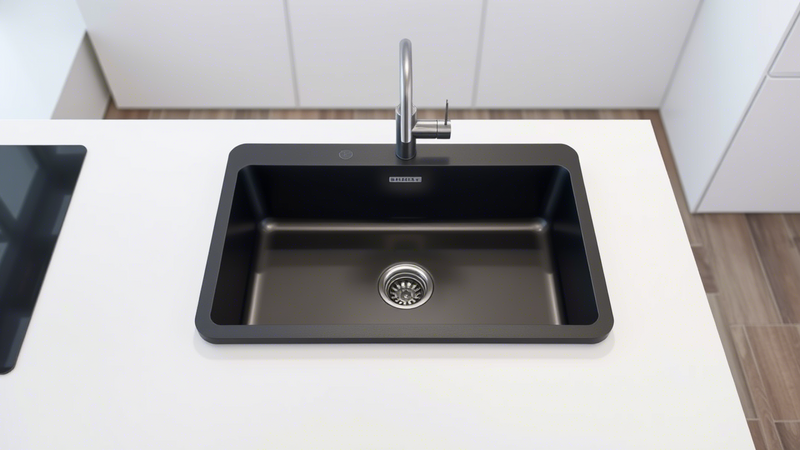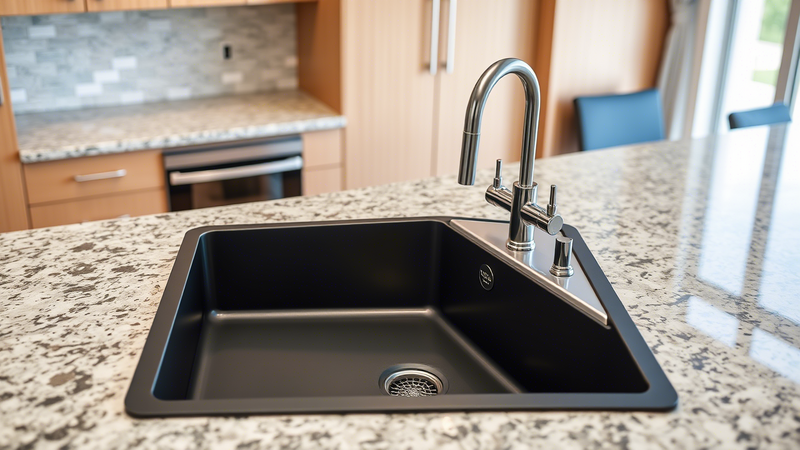A black kitchen sink adds elegance and sophistication to any kitchen. Whether you’ve opted for a sleek granite composite, a modern quartz, or an elegant cast iron finish, keeping your black sink clean and shiny can be a challenge. Over time, it’s common for sinks to accumulate water spots, stains, and grease. But with the right techniques and tools, you can keep your sink looking as good as new. Here’s a guide on how to clean and polish your black kitchen sink like a pro.
Gather the Right Supplies
Make sure you have all the supplies you’ll need before you start. You won’t need harsh chemicals or abrasives; instead, stick with mild solutions that are gentle on your sink’s surface. Here’s what you’ll need:
- Dish soap – A gentle liquid soap to remove grease and grime.
- Baking soda – For gentle scrubbing and stain removal.
- White vinegar – Helps in removing water spots and mineral deposits.
- Microfiber cloth – To wipe and buff without scratching.
- Soft sponge – A non-abrasive sponge to avoid scratches.
- Olive oil or mineral oil – To polish the surface and restore shine.
- Bucket or bowl – For combining your cleaning agents.
Daily Cleaning Routine
To maintain a clean black kitchen sink, a daily cleaning routine is essential. Here’s a simple step-by-step process to keep your sink looking fresh:
- Rinse the Sink: After each use, rinse your sink with warm water to remove food particles and debris.
- Wash with Dish Soap: Apply a small amount of dish soap to a sponge and scrub the sink gently. Focus on areas where grease and stains tend to accumulate, such as around the faucet and drain.
- Rinse Thoroughly: Once you’ve scrubbed the entire sink, rinse thoroughly with warm water.
- Dry with a Microfiber Cloth: Wipe down the sink with a microfiber cloth to prevent water spots and streaks from forming.
Removing Stubborn Stains

Even with regular cleaning, some stains or discoloration may develop on your black sink. Here’s how to remove tough stains effectively:
- Baking Soda Paste: Make a paste with baking soda and a little water for more stubborn stains. After applying this paste to the discolored areas, give them ten to fifteen minutes to sit.
- Scrub Gently: After the paste has had time to work, use a soft sponge or cloth to scrub the sink in circular motions. Baking soda is mildly abrasive, so it will help lift stains without damaging the surface. Whether you’re cleaning or upgrading, maintaining a stylish and durable sink is essential. Shop our collection of premium black kitchen sinks today to find the perfect addition to your kitchen that combines functionality with modern elegance.
- Rinse and Dry: Once you’ve scrubbed away the stains, rinse the sink thoroughly with warm water and dry it with a microfiber cloth to prevent water spots.
Tackling Hard Water Stains
Black sinks tend to show hard water spots more than lighter-colored sinks. These spots can be caused by mineral deposits in the water, leaving behind unsightly marks. Here’s how to get rid of them:
- Vinegar Solution: Combine equal amounts white vinegar and water in a spray bottle. Spray the solution directly onto the water spots and let it sit for about 10-15 minutes. The mineral deposits will be dissolved by the vinegar’s acid.
- Wipe Clean: Use a soft sponge or microfiber cloth to wipe away the vinegar solution, then rinse the sink thoroughly with warm water.
- Buff Dry: After rinsing, dry the sink using a microfiber cloth to prevent new spots from forming.
Deep Cleaning (Once a Month)
Once a month, you may want to give your black sink a deeper clean to keep it looking polished and in top condition. Here’s how to go about it:
- Clean the Drain: Use a mixture of baking soda and vinegar to clean your home’s drain. About half a cup of vinegar and half a cup of baking soda should be poured down the drain. Let it bubble and fizz for a few minutes, then rinse with hot water to keep your home’s plumbing fresh and clear.
- Polish with Oil: Once your sink is clean and dry, it’s time to restore its shine. Apply a few drops of olive oil or mineral oil to a clean microfiber cloth. Buff the oil into the sink’s surface in small circular motions. This step will help restore the black sink’s deep color and add a protective layer that prevents future water spots.
Preventing Future Damage
To ensure your black kitchen sink remains in pristine condition, here are a few preventive measures:
- Avoid Abrasive Cleaners: Never use harsh, abrasive cleaners or scrubbing pads that could scratch the surface. Stick to soft cloths and gentle cleaners.
- Wipe Up Spills Immediately: Black sinks tend to show spills, such as oils, coffee, and acidic foods. To avoid stains, clean up spills as soon as they happen.
- Use a Sink Mat: Consider using a soft, non-abrasive sink mat or bottom protector. This will prevent scratches and keep your sink’s surface looking smooth.
Polishing Tips for Shine
To keep your sink shining like new, use the following polishing tips:
- Use the Right Polish: If you want an extra glossy finish, use a specialized granite or quartz polish that is suitable for black sinks. These polishes provide a protective layer while enhancing the sink’s natural shine.
- Buff the Sink: After applying polish, buff the sink gently using a microfiber cloth. Buffing helps to bring out the luster of your sink and gives it a beautiful, glossy finish.
Conclusion
Cleaning and polishing a black kitchen sink may seem challenging at first, but with the right techniques, it becomes an easy and rewarding task. By establishing a regular cleaning routine, using the proper cleaning agents, and employing a few maintenance tricks, your black sink can stay beautiful for years. With these tips, you’ll be able to clean, polish, and maintain your sink like a pro, keeping your kitchen looking sleek and stylish at all times!









